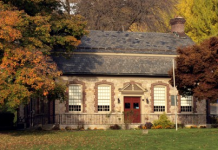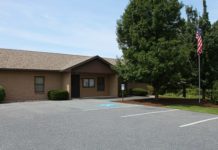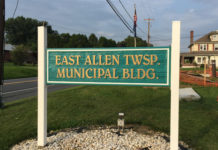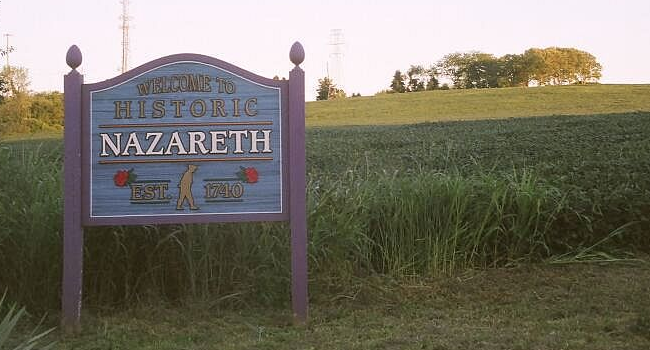A large crowd saw a magnificent transformation of the Bath Museum on Saturday afternoon. The countless hours spent in arranging artifacts that reflect the history of the Borough of Bath drew high praise from all those who attended the ribbon cutting ceremony marking the re-opening of its quarters in the new Bath Municipal Building at 121 S. Walnut Street.
After a moment of silence in memory of Evelyn Hartzell, one of three founders who passed away recently, remarks were given by her granddaughter Annemarie Hartzell of the Museum Committee, and then Diane Lager introduced the other members: Yurii Bartholomew, Darrin Heckman, Blaine Hoffmeister, Agnes Melinsky, Peggy Moser, and Marjorie Rehrig. In addition to the committee, volunteers include Brian Daugherty, Chris Erdo, Allen George, John Kearns, John Kortz, Tom Lager, and Mark Roth. Special thanks were given to Carol Bear-Heckman, councilwoman and Linda Kortz, retired professional exhibit designer, for all of their dedication and hard work put into the new museum as they were presented with flowers. Bear-Heckman and Kortz got in touch with a cabinet maker and their designs afforded storage space, making the cut back from three classrooms to just one with additional hallway space of historical items completely doable. Their energy was a breath of fresh air in guiding the museum committee. Carol acted as a liaison between the museum committee and Bath Borough council and Linda offered her expertise in making this beautiful museum.
They all gathered together and cut a green ribbon to mark the official opening.
State Representative Marcia M. Hahn, (R-138th
), a resident of Bath, gave a speech and Taylor Munoz presented a plaque to Mrs. Lager on behalf of Senator Mario Scavello.
Mayor Fiorella Mirabito mentioned the new motto, “Bath, History Nestled with Friendship” and gave praise to all of the citizens and volunteers that make Bath such a special town in brief remarks along with Borough Manager Bradford T. Flynn.
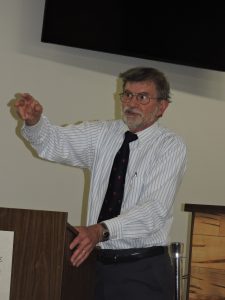
Ed Pany discusses Bath’s rich history.
Edward Pany, curator of the Atlas Cement Co. Memorial Museum in Northampton, was the main speaker. He opened by recognizing many of his past students from Bath. He told of Bath’s people who lived here 39 years before the Revolutionary War; its relationship to Bath, England; the Wesselhof home in Bath which was the beginning of Hahneman Hospital in Philadelphia; how people came here to work at the cement factories; the various clubs of sportsmen, the American Legion and Lions Club that sprang up after World War I; the men who served in World War II; the trains that went through here; and the seven roads that intersect in Bath.
He told that and much more, as only Ed Pany can, a true historian, who tells it with deep feeling. Pany earlier credited this Home News editor emeritus with getting him started in writing historical accounts. He also noted the dedication of Mayor Mirabito, and an excellent borough manager and borough Council.
The people stayed after the program and looked closely at the two rooms of artifacts collected from the residents who wanted to share and preserve Bath’s rich history and traditions.

